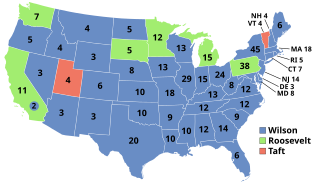
The United States presidential election of 1912 was the 32nd quadrennial presidential election, held on Tuesday, November 5, 1912. Democratic Governor Woodrow Wilson of New Jersey unseated incumbent Republican President William Howard Taft and defeated former President Theodore Roosevelt, who ran as the Progressive Party nominee. Roosevelt remains the only third party presidential candidate in U.S. history to finish better than third in the popular or electoral vote.
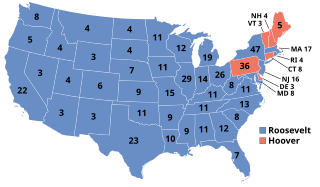
The United States presidential election of 1932 was the thirty-seventh quadrennial presidential election, held on Tuesday, November 8, 1932. The election took place against the backdrop of the Great Depression. Incumbent Republican President Herbert Hoover was defeated in a landslide by Democrat Franklin D. Roosevelt, the Governor of New York. The election marked the effective end of the Fourth Party System, which had been dominated by Republicans.

The 1944 United States presidential election was the 40th quadrennial presidential election. It was held on Tuesday, November 7, 1944. The election took place during World War II. Incumbent Democratic President Franklin D. Roosevelt defeated Republican Thomas E. Dewey to win an unprecedented fourth term.

Robert Marion La Follette Sr. was an American lawyer and politician. He represented Wisconsin in both chambers of Congress and served as the Governor of Wisconsin. A Republican for most of his career, he ran for President of the United States as the nominee of his own Progressive Party in the 1924 presidential election. Historian John D. Buenker describes La Follette as "the most celebrated figure in Wisconsin history."

Alexander Wiley was a Republican who served four terms in the United States Senate for the state of Wisconsin from 1939 to 1963. When he left the Senate, he was its most senior Republican member.

Philip Fox La Follette was an American politician from the US state of Wisconsin. He served three terms as the Governor of Wisconsin and helped create the Wisconsin Progressive Party.

The United States Senate elections of 1934 occurred in the middle of Democratic President Franklin D. Roosevelt's first term. In the middle of the Great Depression, voters strongly backed Roosevelt's New Deal and his allies in the Senate. The Democrats picked up a net of nine seats, giving them a supermajority. President Harry S. Truman was first elected to the U.S. Senate in the 1934 election. Truman would serve over a decade in the U.S. Senate, before becoming President Roosevelt's third Vice President, before succeeding to the presidency upon the death of President Roosevelt.
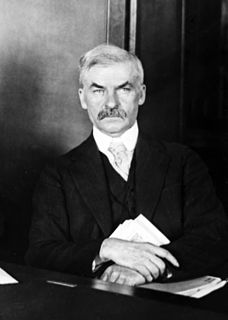
Thomas James Walsh was an American lawyer and Democratic Party politician from Helena, Montana who represented Montana in the US Senate from 1913 to 1933. For his first two terms, he was elected by the state legislature, as was the custom of the time, and in 1924 and after he was elected by popular vote, which was established by constitutional amendment.
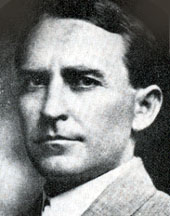
The 1936 United States House of Representatives elections was an election for the United States House of Representatives in 1936 which coincided with President Franklin D. Roosevelt's landslide re-election. Roosevelt's Democratic Party gained twelve more net seats from the Republican Party, bringing them above a three-fourths majority. This was the largest majority since Reconstruction. The last time a party won so decisively was in 1866.
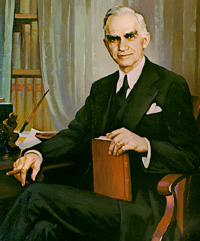
The 1934 United States House of Representatives elections were held in the middle of President Franklin D. Roosevelt's first term. The Democratic Party continued its progress, gaining another 9 net seats from the opposition Republican Party, who also lost seats to the Progressive Party. The Republicans were reduced below one-fourth of the chamber for the first time since the creation of the party. The Wisconsin Progressive Party, a liberal group which allied with the Democrats, also became a force in Wisconsin politics.
The Progressive Party of 1924 was a new party created as a vehicle for Robert M. La Follette, Sr. to run for president in the 1924 election. It did not run candidates for other offices, and it disappeared after the election. The party advocated progressive positions such as government ownership of railroads and electric utilities, cheap credit for farmers, the outlawing of child labor, stronger laws to help labor unions, more protection of civil liberties, an end to American imperialism in Latin America, and a referendum before any president could lead the nation into war.
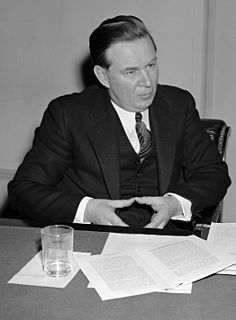
Thomas Ryum Amlie was a U.S. representative from Wisconsin.

Celebrating the Arts is a public artwork by Indian artist Narendra M. Patel located at the Roosevelt Creative Arts Middle School, which is in Milwaukee, Wisconsin, United States. The sculpture is an abstract form created from over two tons of steel sheets welded together. It is 20' high x 14' wide x 6' deep and was constructed in 1989.

Bellinger is an unincorporated community located in the towns of Roosevelt and Taft, in Taylor County, Wisconsin, United States.

Timberland is an unincorporated community located in the town of Roosevelt, Burnett County, Wisconsin, United States.

The 1904 United States presidential election in Wisconsin was held on November 8, 1904. Wisconsin voters chose thirteen electors to the Electoral College, who voted for president and vice president.

The 1932 United States presidential election in Wisconsin was held on November 8, 1932. Wisconsin voters chose twelve electors to the Electoral College, who voted for president and vice president.

The 1936 United States presidential election in Wisconsin was held on November 3, 1936. Wisconsin voters chose twelve electors to the Electoral College, who voted for president and vice president.

The 1940 United States presidential election in Wisconsin was held on November 5, 1940. Wisconsin voters chose twelve electors to the Electoral College, who voted for president and vice president.






















